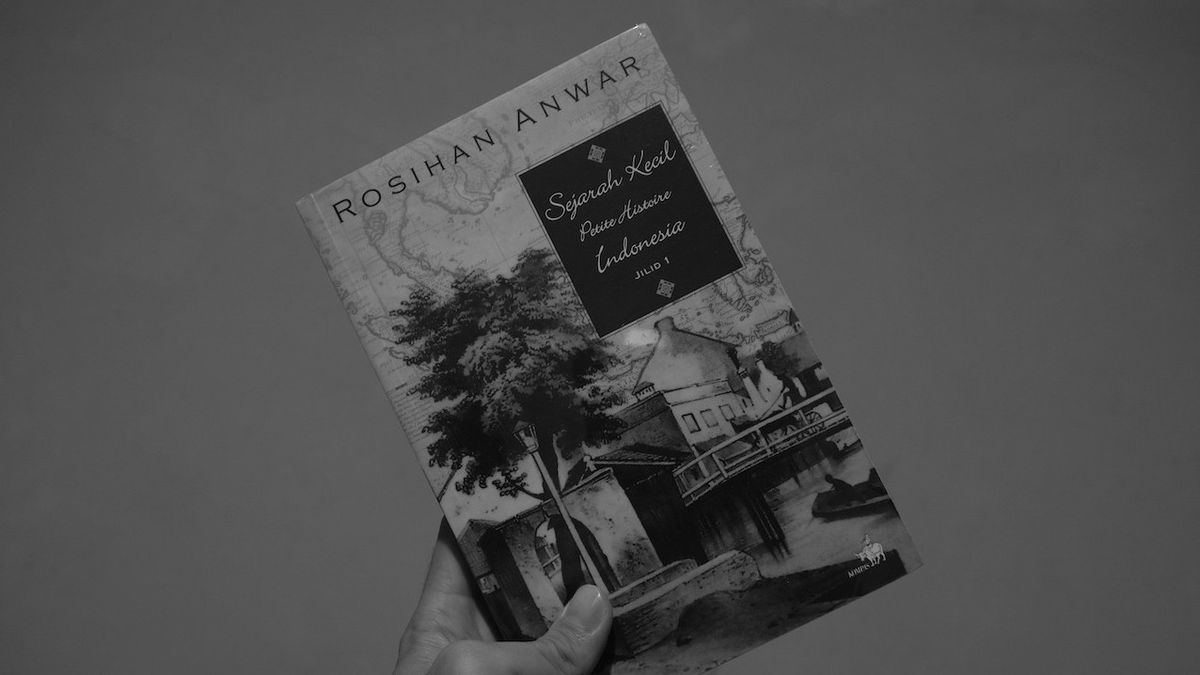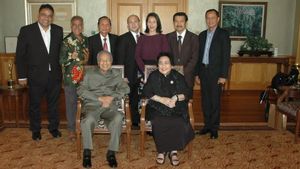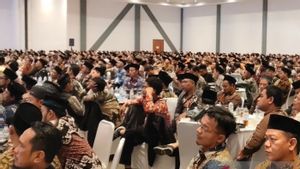JAKARTA - Reading epics of regional historical figures is always interesting. Including Cut Nyak Dhien to Willem Walraven. Especially if the story is written nicely by a historical witness as well as a well-known Indonesian journalist, Rosihan Anwar.
In his book entitled The Little History of Indonesia "Petite Histoire" Volume 1 (2004), Rosihan writes small stories related to Indonesia complete with intellectual actors. Some of the events presented by the book owner are interesting because they are combined with journalistic tips so that they can be accounted for.
As an opening, Rosihan talked about East Timor. He explained that the territory was separated from Indonesia. Rosihan was very clever in attaching journalistic news fragments he had written, then reviewed the long details related to the origin of the East Island colonized by the Portuguese, being glimpsed by the Dutch, joining Indonesia, and choosing to become independent. All of these were reviewed by Rosihan so that history can be interesting for the younger generation.
“It's been a while since I thought about how to make history interesting for the younger generation. History which does not consist of a series of years or jaartallen to be memorized, but which is felt alive and meaningful for today's life. History is not a mere 'dry' item, but a reality that is constantly moving and deserves to be well understood, ”added Rosihan Anwar in his preface.
Not only the story about East Timor. Other stories such as the characterization of Cut Nyak Dhien in the Aceh war, Rasuna Said against Dutch rule, Willem Walraven who opposed colonialism, and Tiga Serangkai who founded Indische Partij are no less interesting. It was through this story that people came to understand that Indonesian independence was not only the role of the natives. There, those who were called totok also took part in the struggle to cry out the words: "Freedom, independence, freedom."
Cut Nyak Dhien and the Aceh WarCut Nyak Dhien as a figure who actually has a huge influence. The daughter of the warlord named Nanta Setia is said to be a figure who is closely related to the issue of equality. This woman who was born in Lampadang, Aceh Besar, 1848 managed to prove that the roles of men and women in this struggle are equal.
Rosihan said that even though the Dutch had declared the Aceh War over in 1904. In fact, the struggle of the Acehnese people against kaphee (kafir) never stopped. One by one Tanah Rencong fighters appeared to fight the Dutch. Including, those who were dubbed the een national heldenpaar (the pair of national heroes). Teuku Umar and Cut Nyak Dhien. In more detail, we have reviewed it in the article "Cut Nyak Dhien: A Mirror of Equality in Medan Juang."
"Teuku Umar is dead, but his wife Cut Nyak Dhien and his commander, Pang Laot Ali, and 300 loyal fighters who have survived for six years in the jungle, waged a guerrilla war against the Dutch. They called it the Sabil War, ”wrote Rosihan on page 68.
Rasuna Said and the women's movementResistance to the Dutch was also instigated by those outside Java. Especially by them women in West Sumatra. At that time, many West Sumatran women participated in fueling political movements. At one time their movements were even more powerful than men's. Rasuna Said, for example.
“Rasuna is a teacher at an Islamic high school in Padang Panjang led by Rahmah el-Yunussi, with more than 1,000 female students. As the leader of the Indonesian Muslim Association (Permi), Rasuna used to make fiery speeches against the power of the Dutch East Indies government. To silence him, the colonial government was forced to arrest Rasuna Said, "present on page 100.
Tiga Serangkai and Indische PartijPerhaps one of the momentum of the national movement came from the birth of the Indische Partij in 1912. The party was the work of three major figures: Ernest Douwes Dekker, Soewardi Sorjoningrat, and Tjipto Mangoenkoesoemo. The ideals of the establishment are clear. This political party advocates racial equality, socio-economic justice, and independence.
In a sense, this is the first political party that has the courage to embrace all groups - be it Indo, full-blooded, European - to strive together to achieve the word Merdeka. This can be seen from the number of members of the Indische Partij, which numbered 7,000 in 1913. Meanwhile, the native people only numbered 1,500 of the total.
Their resistance to the Dutch was mostly done through pen strokes. The three of them did not hesitate to strongly criticize the Dutch colonialism. Dekker for example. In one of his speeches, Dekker proudly said: If all the Javanese spit at the same time, the Dutch will drown.
Willem Walraven: Journalist against colonialismIf anyone asks about the involvement of a totok other than Multatuli (Eduard Douwes Dekker) in exposing colonialism, then the answer is Willem Walraven. During his lifetime, Walraven, who is a Dutch national, has written several novels and many short stories. Even though he thought journalism was a tough profession, through his questioner Walraven always voiced anti-colonialism messages.
“Walraven was one of the best journalists writing in the Indies. He berated the colonial and colonial systems of Europe, ”writes page 229.
Those are some interesting story fragments from Rosihan Anwar's book. More fully, he also told about the country's celebrities who were exiled to Bengkulu, the spree of the governor-general of the Dutch East Indies, the resistance of the Banten people, the birth of the Indonesian National Army (TNI), and the story of the song Indonesia Raya. Therefore, this book is important in understanding Indonesian history more deeply.
The English, Chinese, Japanese, Arabic, and French versions are automatically generated by the AI. So there may still be inaccuracies in translating, please always see Indonesian as our main language. (system supported by DigitalSiber.id)













